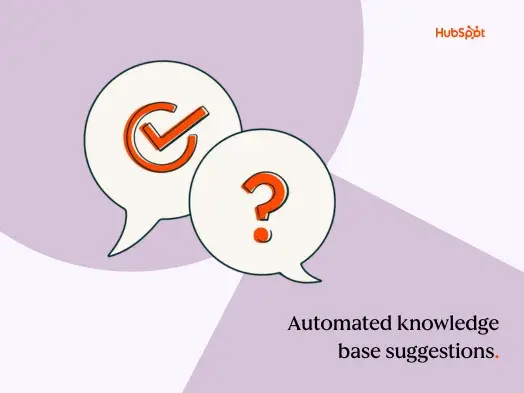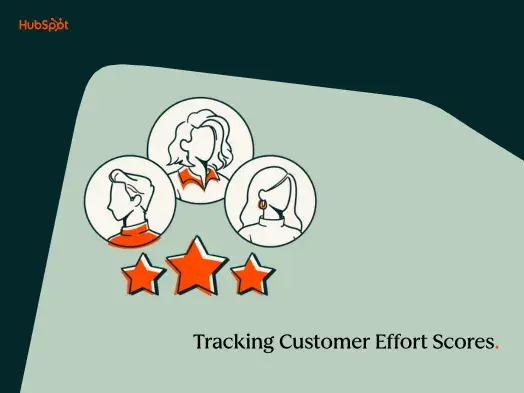10 Ways Marketing and Customer Service Can Work Together
1. Social Media Customer Support
Many marketers use social media to provide customer service -- and not just to engage with their audience and promote content. But is your marketing team's social media manager really capable of handling these customer service issues as effectively as someone on your team? Probably not.
Your customer support team has been given the proper training and resources needed to assist customers and resolve issues -- meaning you are the best people for the job.
While it absolutely does make sense for your business' social media account management to be a function of your marketing team, that doesn't mean people from other departments can't be involved. Why provide your customers with a subpar customer service experience just for the sake of keeping social media management solely under the marketing team?
Luckily, there are a number of tools available to marketers to make this possible -- and easy. Using a third-party social media management tool, such as HubSpot or Hootsuite, marketers can easily collaborate with the customer support team to route customer-related questions to your team, making it easy for communications to be handed off to the most appropriate person.
Coming up with a system that enables members of your customer service team to participate in customer service-related inquiries via social media will only make for a better customer experience.
2. Content Creation Ideas
Successful marketers understand how important regular and consistent content creation is to their marketing strategy. Unfortunately, regular and consistent content creation means marketers also need a steady flow of ideas about which to create content, and even the most experienced content creators can sometimes suffer from the struggle to come up with remarkable content ideas that their audience will find valuable.
This is where your team can save the day.
As people who are constantly communicating with customers and learning about their problems, interests, and needs, your team is an untapped goldmine of viable content ideas -- you just might not know it yet. After all, marketers are trying to create content that helps solve their audience's problems, and your team knows best what those problems are. You can also probably provide the marketing team with real-life customer examples and successes to use in their content, which is always an added bonus.
Open the lines of communication between the content creators on the marketing team and your team. Consider meeting regularly to teach them about the problems your customers are facing, and brainstorm about the types of content they can create to address those problems. For example, our blogging team uses a page on HubSpot's internal wiki as a way for members of the sales and customer teams to submit blog article ideas based on their communications with customers and prospects.
Simultaneously, as a customer support rep, share ideas for content that you think would be especially helpful for customers and prospects -- from step-by-step instructions for how to use a certain software or tool, to a bigger explainer guide of how best to employ a new social network.
3. Buyer Persona Development
How well do you really understand your buyer personas? They're fictional representations of your target customers, but you might learn over time that you don't really understand your customers as well as you thought you did. Or perhaps you haven't even developed well thought-out buyer personas in the first place.
Truly understanding the inner-workings of your ideal customers can provide you with a number of business, customer support, marketing benefits, such as a better understanding of customer needs, problems, and interest, knowledge of where customers spend time on your site, better-quality leads, consistency across your business, richer closed-loop analytics, and better product development.
The great thing is, your team is talking to customers all the time, meaning you probably know more about them than any other department within your company. So, because understanding buyer personas is so critical for creating effective marketing campaigns, it behooves marketers to work more closely with your team to help them truly understand customers' needs and thoughts. Marketers can sit in on customer team meetings and join in on customer calls for better insight into the personas you're marketing to.
4. Customer Expectation-Setting
One very telling indicator of an effective marketing team is when leads have clear expectations for how your business' products and services will help them. And when leads have clear expectations, the transition from lead to customer, as well as that customer's subsequent experience as a customer, can go much more smoothly. This is how the marketing can help prevent customer churn, since that is often the result of misleading expectations that can be attributed back to misleading marketing campaigns.
So how does customer service factor into this? When the two teams are better aligned, the customer service team can notify the marketing team of instances when inadequate or misleading expectations have been set, since members of your team will likely be the ones to stumble across these inconsistencies.
Then, marketers will be able to modify campaigns to better set expectations for potential customers. For example, if your marketing team was relying heavily on the messaging that the indoor paint you sell dries in minutes, but in reality, customers report that it takes hours, your marketing team could rectify the false expectations they were setting in their marketing campaigns.
5. Unified Messaging
When prospects and customers have questions about a promotion your marketing team is running, who are they gonna call?
Customer support, of course.
The reason is simple: it's the easiest phone number to find on most business' websites. But if your team knows nothing about that live webinar your marketing team is currently holding, and a prospect calls looking for the webinar link they forgot to bookmark when they signed up, the customer support rep will have no idea what they're talking about.
That's why it's so important for the customer support to be in the know about what promotions the marketing team is deploying -- so you can be well-equipped to answer any questions that pop up from prospects and customers alike. You should know where on the website to find that ebook, how to log in to that webinar, and where to enter that contest.
Marketers should arm the customer support team with the resources they need to be successful. At HubSpot, for example, we keep a shared Google Doc where our support team can access the links and log-in information for every upcoming webinar we host. This eliminates the wasted time and effort of customer support reps trying to contact the marketing team while a caller waits on hold, making for a happier caller and a more efficient support process.
6. Sharing Customer Stories
Customer problems aren't the only discussion topic your customer support team shares with the marketing. They are also often the best equipped and first to identify cases of customer happiness and success.
Better customer service and marketing alignment enables your marketing team to more easily pinpoint the customers that make great case study candidates, especially if they're looking for specific examples of customer success and your team knows about these preferences in advance. Your team can also be on the lookout for customer testimonials and examples of customer happiness, as well as encourage those happy customers to provide those online reviews that marketers love -- and want to share widely.
Be sure to let your marketing team in on these instances of customer delight so they can more easily source customer successes and happiness to support PR outreach and other customer-centric marketing initiatives.
7. Customer Loyalty Programs
Building a customer loyalty program is a key way to keep loyal customers engaged with your brand. And whether you're rewarding them with points, discounts, or exposure on your social media or other marketing channels, your customer success team can collaborate with Marketing closely to sweeten the deal for customers -- and bring your program more exposure.
A valuable customer loyalty reward could very well involve your marketing team -- like a social media share of your customer's resources, or a featured guest post on your blog, or a co-marketing opportunity. A brainstorm between the marketing and customer success teams could bring about a loyalty program that customers are clamoring to join -- without creating too much of a heavy lift for the marketers.
8. Product Marketing
The customer success team is likely the most in tune with understanding how customers actually use your products and services. And to many marketers' surprise, sometimes the way customers use a product doesn't exactly line up with how marketers have been marketing it.
Regular meetings between members of marketing and customer success teams will help avoid situations where marketing is promoting a product feature that is underutilized by or unsatisfying to customers. Or, perhaps your customers are using your product or service in a way that wasn't originally intended and that your marketing team never thought to promote. This collaboration will help inform future, more successful product marketing initiatives and collateral.
9. Shared Goals
As different as everyday job responsibilities may be, marketing and customer teams have similar and shared goals: to attract new visitors, convert them into customers, and retain those customers with excellent service.
Both teams have a lot of insights to offer the other about how they capitalize on the work the other does in order to get their job done. For example, Marketing could pass along to Customer Service the blog posts that are the most popular, so they could share valuable insights with customers. Alternately, Customer Service could pass along to Marketing what topics their customers are regularly asking questions about for inspiration for future webinars, ebooks, or blog posts.
Regular meetings and communications where teams can share insights and learnings with one another, as well as share unique perspectives about the strategies each team employs at different parts of the customer lifecycle.
Service Marketing
Service marketing refers to marketing for B2B or B2C companies that sell services to customers and other businesses. Services are usually intangible and time-based, and occur multiple times over the course of a relationship -- such as a house cleaning services, or a consulting services. Service marketing is rooted in value creation for prospects and customers that isn't as tangible as the value created from purchasing and using a product.
This is another, less traditional way customer service and marketing can work together: if both teams work in the service marketing industry. In this industry, marketers have to work in customer service, and customer service reps double as marketers in order to attract and retain services customers. In addition, the people performing the service serve as marketers in their own right to try to encourage the customer to re-purchase additional services.
To learn more, read about the advantages of using live chat for customer service next.
.png?width=112&height=112&name=Image%20Hackathon%20%E2%80%93%20Vertical%20(9).png)








.png)

-2.png)
